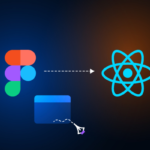A fast-developing area called materials informatics employs data-driven methodologies to enhance the study of materials. Materials informatics has the potential to change the discipline by offering more efficient and effective techniques to evaluate and create materials with specified features in light of the exponential expansion of data and rising complexity of materials research.
Artificial intelligence and machine learning
The most exciting fields in materials informatics are those using machine learning (ML) and artificial intelligence (AI). These technologies may be used to find links and patterns in enormous datasets that may be challenging to find using conventional analytical techniques. Researchers can create materials with specified properties for certain uses by using machine learning algorithms to anticipate the qualities of new materials based on current data. Researchers can more quickly create and test novel materials using AI to maximize the material’s qualities.
- Cooperation and data integration. In the field of materials informatics, cooperation, and data integration are also new developments. It is getting more crucial to combine data from many sources and work in a cross-disciplinary way as the amount of data created in materials research keeps expanding. Thanks to materials informatics platforms and solutions, researchers can collaborate more efficiently to address the challenges by sharing data more easily.
- High-throughput computing. Using computer simulations to produce enormous volumes of data quickly is known as high-throughput computing. This method enables researchers to mimic the behavior of materials under various situations, such as temperature and pressure, making it particularly helpful in materials informatics. For example, researchers can forecast the characteristics of novel materials and tailor those qualities for particular uses by modeling the behavior of materials under various situations.
Open infrastructure
The United States has launched the Materials Genome Initiative (MGI) to speed the creation and application of novel materials. The MGI aims to usher in a new era of materials innovation by creating an open infrastructure incorporating materials data, computational tools, and experimental facilities. The success of the MGI might result in advancements in materials science and engineering. In addition, the MGI is a key driver of materials informatics research.
Using quantum computing
A recent field of study called quantum computing can potentially transform materials informatics. Quantum computers were developed to address issues beyond the scope of conventional computers, such as mimicking the behavior of materials at the atomic scale. As a result, researchers could precisely simulate and anticipate the behavior, making it possible to produce individual materials with distinct features.
Conclusion
The exciting and rapidly expanding field of materials informatics has the potential to transform the study of materials completely. Data integration and collaboration, machine learning, and quantum computing are some of the major developments in materials informatics that are accelerating the discovery of novel materials and helping to optimize their features for particular applications. As a result, we may anticipate seeing more quick and important advancements in materials science research as these trends continue to grow. This will result in the creation of innovative materials that have the potential to alter civilization.








